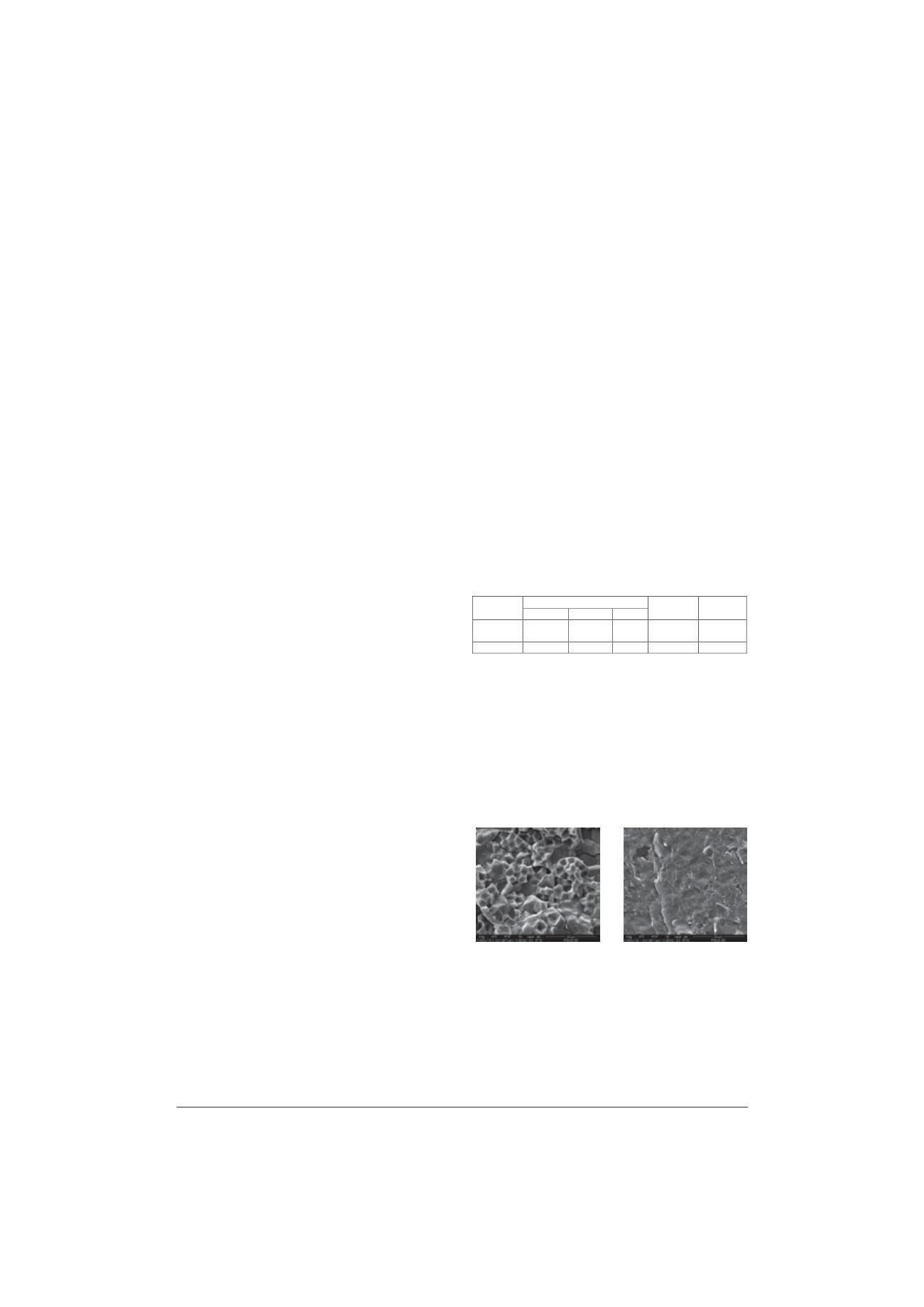
2011 International Conference on Alternative Energy in Developing Countries and Emerging Economies
- 178 -
rice, the percentage difference of HRY of parboiled
rice was about of 13.7-20.6% higher. However, HRY of
parboiled rice is slightly lower than control rice (about of
3-19%). This is because drying with high temperature
induced high temperature gradient causing stress
development inside the kernels [13]. From the results,
they showed that HRY of parboiled rice was
insignificantly different with different drying temperature
and IR power.
2. Yellowness and whiteness of parboiled rice
The whiteness (W) and yellowness (CIE lab b*
value) of dried parboiled rice with temperature of 60-
100
q
C were determined and presented in Table 3. The IR
power input and drying temperature slightly affected to
the yellowness but had highly effected to the product
whiteness. This is the same report as previous works [13-
16]. Whiteness of product dried with HA and combined
HA+IR drying was significant higher than those drying
with IR. This is because IR can penetrate into the rice
kernel which was heated up to high temperature, so more
browning reaction occurs. For yellowness value and
whiteness obtained at all drying strategies showing a pale
yellow corresponding to the b* value (CIE lab) and
whiteness was in the range between 18.5 to 19.6 and 17.7
to 23.3, respectively.
3. Physicochemical property
The samples were used for determination of
physicochemical properties, namely, gel consistency
(GC), alkali spreading value (AS) and water absorption.
Physicochemical properties of the parboiled rice are
shown in Table 3. AS is used as an inverse indicator
which was evaluated the gelatinization temperature (GT)
of milled rice starch granules [6]. Gelatinization
temperature is an important property of rice because it is
one of the most closely related to the overall rice cooking
behaviors and to the texture of cooked products. During
rice cooking, starch granules take up water and swell.
Over a critical temperature range, they undergo an
irreversible process known as gelatinization, which is
characterized by crystalline melting (loss of
birefringence) and starch solubilization. GC and water
absorption are indicated eating quality. Rice with higher
gel consistency had higher eating quality [14]. Table 3
shows AS test of parboiled rice had lower than raw rice,
so, the parboiled rice had higher gelatinization
temperature and required longer cooking time. AS of
parboiled rice was in range 3.0 to 4.0 which can evaluate
gelatinization temperature over 74
q
C and cooking time is
longer than 24 min, while AS of raw rice is 4.8,
gelatinization temperature is in range 70 to 74
q
C and
cooking time is in range 20 to 24 minute. GC of parboiled
rice decreased in range of 98.5 to 84.3 mm with
increasing drying temperature this result demonstrates
rice gel was harder but all drying condition provided soft
cooked rice. Water absorption of grain kernel is not
significantly different. So, the drying temperature and
drying strategy is not important factor influencing the
AS, GC and water absorption of parboiled rice.
4. Chemical property
Amylose content (AC), protein content (PC) and
lipid content (LC) of parboiled rice are shown in Table 3.
The result found that the chemical properties of rice are
not affected by drying temperature and drying strategies.
E. Thermal property
The thermal properties of rice flour were determined
with differential scanning calorimeter (DSC) to determine
gelatinization temperature of rice and percentage of
gelatinization. The gelatinization temperature, enthalpy
energy and cooking time of rice are shown in Table 4.
The result found that the parboiled rice had gelatinization
temperature 79
q
C, cooking time is 27 min. Raw rice had
gelatinization temperature 72
q
C, cooking time is 23
minute. This result is according to the AS result. The
higher gelatinization temperature is due to retrogradation
of parboiled rice causing reassociation of starch
molecules. Consequently, the reassociated starch
structure is resistance to water penetration and thus
required more energy for water absorption during the
heating period in DSC testing.
F. Morphological structure determination
The microstructure of starch granules is shown in Fig.
3. Microstructure of reference rice is shown in Fig. 3a,
the starch granules spreads throughout the cross-section
surface. When parboiled rice, the starch granules swelled,
absorbed surrounding moisture, and gelatinized, leading
to loss its granular appearance. The rice kernels were
observed as smoother appearance on the cross-sectional
structure as represented in Fig. 3b.
G. Specific energy consumption
The specific energy consumption (SEC) is found to
be decreasing with drying temperature increased due to it
required shorter drying time. Moreover, drying time
slightly dependent to drying air temperature but highly
dependent to energy source. The results show in Fig. 4.
a) b)
Fig. 3. Microstructure of a) reference and b) control rice.
TABLE
IV
G
ELATINIZATION TEMPERATURE
,
ENTHALPY ENERGY AND COOKING
TIME OF REFERENCE AND CONTROL RICE
Condition Gelatinization temperature (
q
C) Enthalpy
energy(J/g)
Cooking
time (min)
T
0
T
p
T
c
Reference
rice
71.61
76.33
80.97
9.03
23
Control rice
79.32
84.17
88.40
1.96
27
*T
o
, T
p
, T
c
is onset temperature, peak gelatinization temperature and
conclusion temperature, respectively.
Control
is parboiled rice dried with ambient air,
Reference rice
is fresh
rice


